Moringa: A Complete Guide to the ‘Miracle Tree’
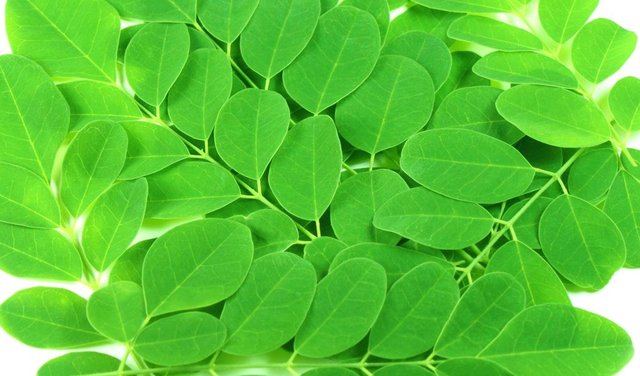
Moringa is the sole genus in the plant family Moringacae.
Moringa refers to a dozen different species woody plants that range from small herbs to tall trees, indigenous to many locations across Asia, Africa and the Middle East.
Due to its exceptional, health-promoting properties, Moringa is praised as the ‘Miracle Tree’. Also referred to as ‘The Tree of Life’, Moringa is believed by many to have great potential to positively influence human society once it becomes widely cultivated.
Topics Include:
- Overview
- Health Benefits
- Adaptogenic Properties
- Growing Conditions
- Functions in the Landscape
- How to Grow
- Intrinsic Characteristics
Moringa Oleifera Overview
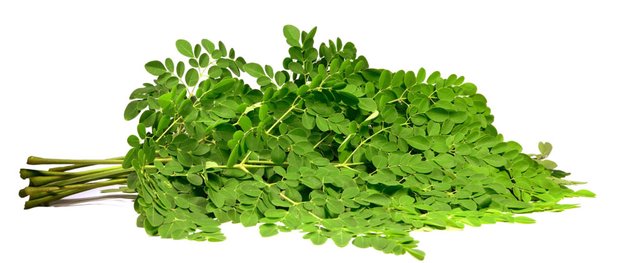
Moringa Oleifera is a fast-growing, deciduous tree that can reach a height of 12m (40 ft.) in just two years!
The tree looks spectacular in the landscape, with grey branches and beautiful green foliage that looks so vibrant and healthy! The leaves taste very mineral-rich and have a spicy/nutty flavour similar to horseradish and a pistachio.
The flowers look like white pea flowers whose fragrance is mild and pleasant. The flowers are later followed by long seed pods resembling drumsticks. Young seed pods are also edible and said to taste sweet and crisp, fresh or cooked.
These seed pods later dry up on the tree and spread their seeds through dehiscence or an explosive rupturing of the seed casing.
Health Benefits
Moringa is a nutritional powerhouse, providing a generous amount of vitamins, minerals, amino acids and anti-oxidants.
Moringa trees are used extensively in indigenous medicines and cuisines, possessing a numerous amount of unique phyto-chemicals with promising potential for regenerative health and well-being.
Phyto-Chemical Effects Include:
- Aphrodisiac
- Analgesic (pain-relief)
- Anti-tumour
- Anti-pyretic
- Anti-epileptic
- Anti-inflammatory
- Anti-ulcer
- Anti-spasmodic
- Anti-hypertensive
- Anti-oxidant
- Anti-diabetic
- Anti-bacterial
- Anti-fungal
- Anti-parasitic
- Diuretic
- Hypolipidemic (cholesterol lowering)
- Hepato-protective
- Immuno-modulatory
- Radio-protective
As a result of the wide variety of polyphenols and phenolic, flavonoids, glucosinolates and alkaloids, the Moringa Tree can be classified as an Adaptogenic Supplement.

Adaptogenic Properties
Adaptogens are foods that provide a full spectrum of healing potential, increasing our energy levels and our natural resistance to environmental stress by providing our cells with what they need to perform their self-healing, self-regulating functions.
Moringa mitigates free radicals and provides excellent protection against oxidative damage and degenerative diseases, thus reducing the appearance of aging – making you look younger!
This is why Moringa Leaf is also an effective food preservative, increasing the shelf life of meat by reducing oxidization.
1 cup of fresh, chopped leaves (21 grams) contains:
- Protein: 2 grams
- Vitamin B6: 19% of the RDA
- Vitamin C: 12% of the RDA
- Iron: 11% of the RDA
- Riboflavin (B2): 11% of the RDA
- Vitamin A (from beta-carotene): 9% of the RDA
- Magnesium: 8% of the RDA
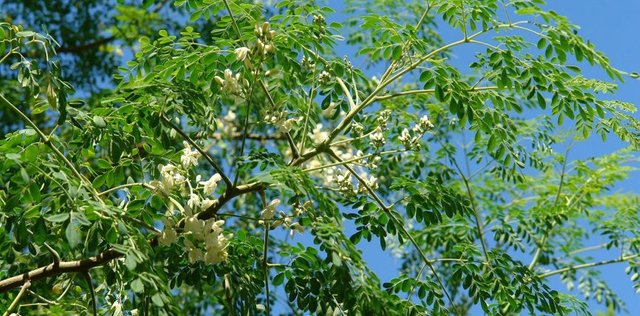
Growing Conditions
Climate
The Moringa tree grows in semi-arid, subtropical and tropical climates (zones 9-10).
They love the sun and heat.
They are drought-hardy, but sensitive to frost.
Planting Moringa in a suitable micro-climate is important when growing these trees in marginal climates prone to frost and will also help to establish young trees.
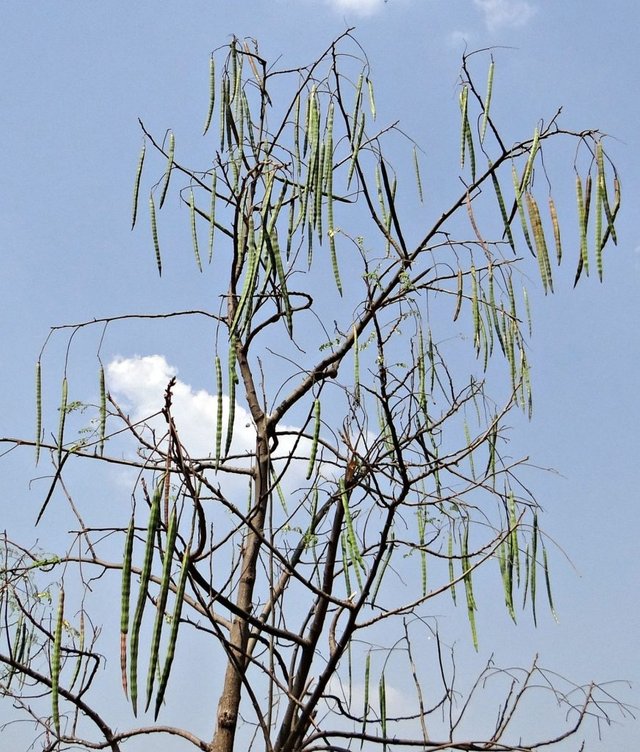
The long drumstick-shaped pods Moringa is famous for. Being Deciduous, Moringa loses its leaves during cool temperatures. Reproductive growth will also cause the tree to defoliate, as pictured.
Soil
Moringa trees are tolerant of a wide range of soil conditions, but do not like heavy clay-like soils which can lead to root rot. The trees grow best in a well-draining, sandy loam with a pH between 6.3 and 7.0.
Well-draining soil is important to prevent the roots from rotting. For the best drainage, simply mix together coconut coir, organic potting mix, and then some sand or ground up rocks like lava rock, palagonite or rock dust minerals.
This mix will provide the perfect consistency to encourage the large taproot to mine deep and drain well.
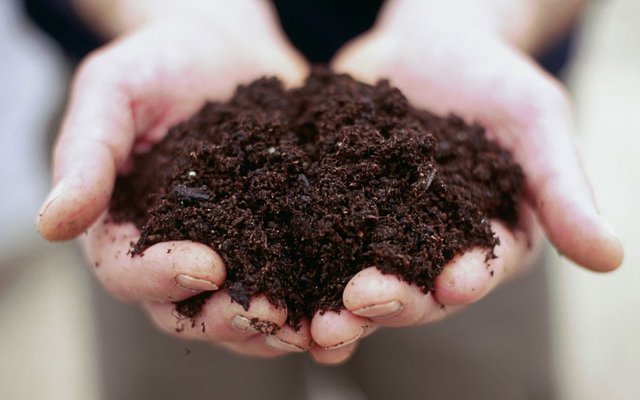
Functions in the Landscape
Companion Plant
Moringa is a valuable, long-term Support Species, providing many useful functions that can help rehabilitate landscapes and create human habitat.
The roots are non-invasive and thus will not hinder the growth of neighbouring trees. The tree has no branching roots, instead mining deep down into the subsoil via a strong taproot, bringing up minerals and nutrients and depositing these in the stems, leaves and seedpods.
Moringa’s taproot also retains moisture, allowing the tree to withstand periods of drought.
When Mycorrhizae is used in planting, you are guaranteed to see noticebale results as the Mycorrhizal fungi will distribute these nutrients all over the landscape for all trees that are in need.
Healthy trees are able to ward off diseases and pests with more resistance than unhealthy trees.
When the nutrient-dense leaves fall through their deciduous leaf drop or other factors, they provide neighbouring trees with many rare, bio-available nutrients that were previously unavailable.

Root Hormone
The leaves contain a plant-growth hormone called Zeatin, which means this plant can be used in plant propagation! The leaves can be utilized as a rooting hormone for plant cuttings by extracting the hormone. Extraction can be done by creating a compost tea or juicing the moringa leaves.
Cuttings of fruit trees you may wish to propagate can then be dipped in this solution and later watered with a diluted solution. This diluted solution can also be used as a nutritious foliar spray for use on other fruit trees.
Zeatin has been reported to increase yields of plants by 25-30%, and therefore Moringa can be expected to promote plant growth of all trees in its proximity.
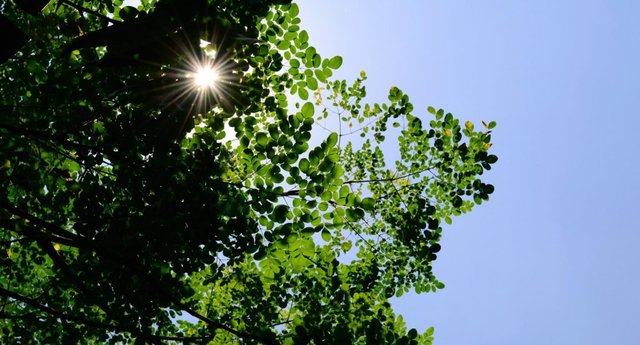
Compost Activation
Due to the nutrient density present in the leaves and seeds, Moringa leaves also make a very effective compost activator.
Adding Moringa in your composting process will create a super-rich, biologically-charged compost pile unlike any other that is sure to boost plant productivity!
Fodder for Livestock
Fresh and Dry moringa leaves can be supplemented with other forage materials for breeding livestock due to their excellent nutritional characteristics. Moringa leaves return a high yield per plant, making it a very viable solution.

Water Purification
In a project lead by Uppsala University, scientists from several countries investigated whether an extract from the seeds of Moringa could indeed purify water.
They discovered that Moringa seeds provided a more efficient purification process than conventional synthetic materials in use today!
A protein in the seeds is responsible for binding impurities together, forming supertight clusters (flocs) which can be separated from the water more efficiently than conventional flocculating agents.
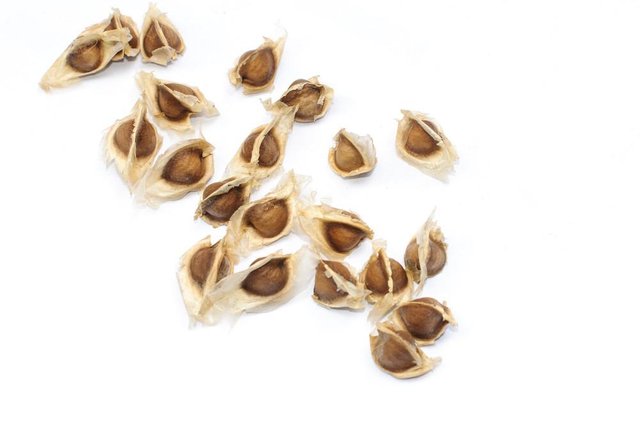
Oil Extraction
The Seeds of Moringa can be used for the production of cooking oil, cosmetic oil and industrial oil.
Moringa Oil is light yellow, odourless and mild tasting.
Although it has a smoke point of 200 °C, it is not recommended to cook with as heating the oil will denature the antioxidants and other constituents.
Omega-9 benefits the heart and brain and improve mood in moderation.
The human body creates Omega-9 naturally and thus it is not necessary to supplement unlike the essential amino acids omega-3 and omega-6.
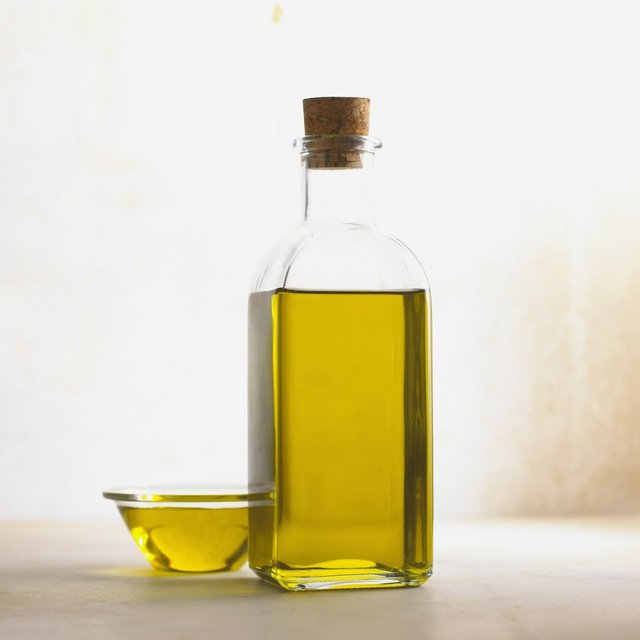
To get the full benefits of this oil, oral consumption should be limited to cold-pressed oils that retain the nutrient value, and taken in moderation.
Moringa Oil is loaded with anti-aging and anti-inflammatory properties due to its high content of phyto-chemicals!
The high presence of Behenic Acid (up to 9% of the oil) is particularly helpful for smoothing and conditioning the skin.
Intrinsic Characteristics
Moringa Trees will grow high, creating a nice shade canopy in Summer and allowing Winter sun to shine through, and so it is great for use in creating Microclimate.
An added benefit is Moringa’s ability to coppice. It can be cut back to 6 feet every year and regrow as a shade canopy – keeping the tree at a manageable height is beneficial for harvesting.
How to Grow
Seed germination is the most common method of propagation, as the germination rate is very high. Seeds can be direct-sowed in the ground, or started in pots inside a greenhouse or protected area to be transplanted later.
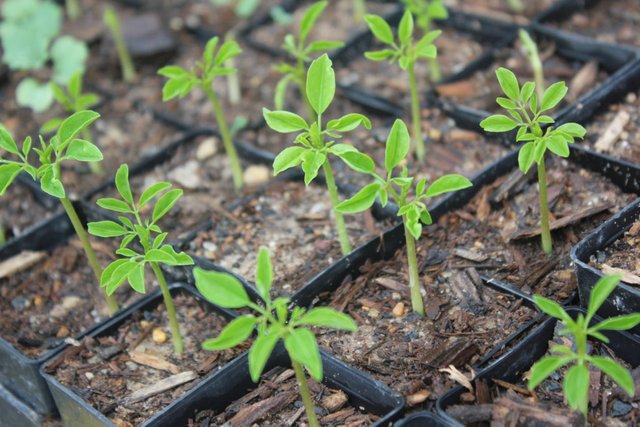
Remember, Moringa are fast growing trees with a vigorous, upright habit of growing. Their taproot is equally as vigorous, and will not tolerate being kept in pots for any extended period of time.
I recommend planting directly into a big pot or directly sowing into its final destination.
– In more humid tropical environments, a variety of soil micro-organisms could attack embryonic moringa seeds. This can be avoided by germinating the seeds on a moist paper towel. Once the seeds have germinated and formed roots, remove the seed husk making sure to leave the nutrient rich endosperm (seed insides) – then plant the seedling in soil.
- Find a location in your garden landscape that gets a large amount of sun exposure (young Moringa Trees will require dappled shade when establishing, so you will need to provide this)
- Dig a deep hole approximately 10 inches wide and 15 inches deep and fill with a well-draining soil mix.
- Sow your seeds early-mid Spring when the average day and night time temperature is 15-20 °C (60-70 °F).
- Plant several seeds approximately 1 inch and cover with soil.
- Pat this soil loosely and water.
- Keep the soil moist (not wet) until the seeds have germinated, which could take anywhere from 2 days to a week or more depending on soil temperature.
- Mulch! To ensure your soil is kept at an even moisture consistency it is beneficial to feed your trees with 12 inches of mulch. Any organic materials will be sufficient. This will keep the soil dry in the Winter and Moist in summer, and also prevent soil erosion.
- Thin Seedlings! Thin your Moringa sprouts leaving only your most vigorous performer
- Tip-Prune! When the Moringa tree has reached just 2 feet tall, it is important to prune the top 20 cm of the plant to encourage lower lateral branching and control the height. This helps for harvesting as well as giving the tree a nicer look. The trees grow back easily after being pruned as they are able to coppice.
- Tip Prune! After the tree has doubled in height, cut off a further 30 cm from the top – feel free to eat this growth too.
Annually Prune. Pruning trees annually or biannually will also prevent the trees from becoming too lanky and spread out, and this will also make harvesting leaves and pods more manageable.
Dry Moringa Powder
Moringa Powder has a pleasant taste, a lot milder than the fresh leaves, and still retains the vital nutrition we’re looking for!
Uses:
- Salves
- Smoothies
- Salad Dressings
- Mashed Potatoes
- Sauces
- Cereal
Enjoy health!
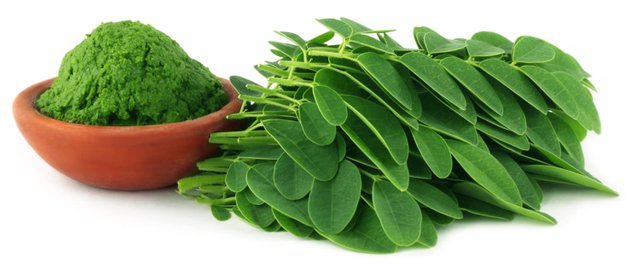
Due to the potency of the phyto-chemicals, over-consumption may result in unknown side-effects.
For best results, Moringa Oleifera should be consumed in moderation to supplement a healthy diet.
As a precautionary measure, it is recommended not to take Moringa during pregnancy.
REFERENCES:
- https://ndb.nal.usda.gov/ndb/foods/show/2974
- http://www.sciencedirect.com/science/article/pii/S0044848602004970
- https://www.ncbi.nlm.nih.gov/pubmed/24206684
- https://www.ncbi.nlm.nih.gov/pubmed/19904611
- http://www.sciencedirect.com/science/article/pii/S0278691509002774
- http://www.sciencedirect.com/science/article/pii/S2214289414000702
- http://www.tandfonline.com/doi/abs/10.1080/13880200802366710
- https://www.ncbi.nlm.nih.gov/pubmed/25808883
- https://www.ncbi.nlm.nih.gov/pubmed/18249514
- https://www.ncbi.nlm.nih.gov/pubmed/17089328
- Growing Moringa
- http://pubs.acs.org/doi/abs/10.1021/la9031046
Top quality post! We had a lot of experience using Moringa in the Philippines as both a food and a medicine. Its called Malunggay over there
Thanks that is excellent to hear!
my wife is part filipina....and her mom sends us seeds almost every year! i lived on cebu and bohol for a few years...and grew to love the people, plants....and the PLACE! cheers!
loving these posts majin!!!!! each post....worthy of its own book/magazine cover! we are growing moringa in the greenhouse this summer and hope to over winter them there next winter. tried a few years ago...and they died. i'll choose a better microclimate next to the pond...and mulch heavier this time! they should make it!
Good luck brother I wish you all the success in the world
Its great that you are making posts of this quality. The real shame is that its only worth a tiny amount and only 9 votes. Ive resteemed it and used some of the services to promote it.
Its the sad flaw with Steemit that you have to be upvoted by someone powerful to get seen. Unfortunately, we all buy into it when we start to write.
Keep up this great level of work. I want to encourage you to succeed here.
Your Post Has Been Featured on @Resteemable!
Feature any Steemit post using resteemit.com!
How It Works:
1. Take Any Steemit URL
2. Erase
https://3. Type
reGet Featured Instantly � Featured Posts are voted every 2.4hrs
Join the Curation Team Here | Vote Resteemable for Witness